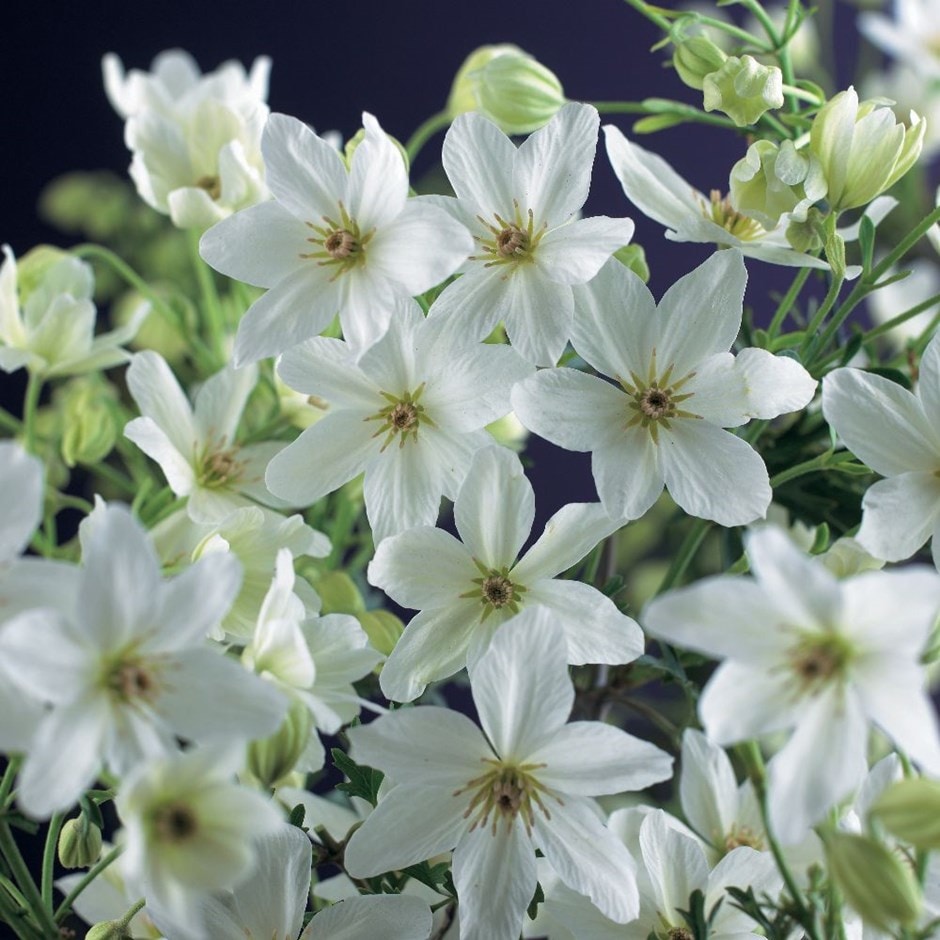Clematis × cartmanii 'Joe'
winter flowering clematis (group 1)




A profusion of small, waxy, pure white flowers on purple-tinted stems appear in April amid finely cut, deep green leaves. This dwarf, evergreen clematis requires a sunny site and protection against frosts. In all but the warmest areas of the country it's best grown in a conservatory or cool greenhouse in a large patio pot.
To avoid dry conditions, and to ensure good soil contact around the rootball, we advise planting climbers at least 30cm (12in), and preferably 45-60cm (18-24in) away from the base of a wall or fence. An even larger distance should be maintained when planting climbers beside an existing tree or shrub.
No routine pruning is necessary. If the spread of the plant needs to be restricted prune immediately after flowering, cutting back overlong shoots to healthy buds. Apply a slow-release balanced fertiliser and a mulch of well-rotted garden compost around the base of the plant in early spring.
Full sun / light shade
Average
Moderately fertile, moist, well-drained soil
Borderline hardy (will need protection in winter in colder areas)



Daphne bholua 'Jacqueline Postill'
daphne
| 2 litre pot | 15 - 20cm | £54.99 |
|
| 20 litre pot | 90-100cm | £249.99 |
|
Clematis 'Markham's Pink'
clematis (group 1) (syn. Clematis macropetala Markham's Pink)
| 3 litre pot | 60cm cane | £26.99 |
|
|
| 9cm pot | 30cm cane | £14.99 |
|
|
| 2 + 1 FREE 9cm pots | £29.98 |
|
Get the latest from RHS Plants, including offers and inspiration. Plus - save 10% off your first order when you sign up.
View our Privacy Policy
